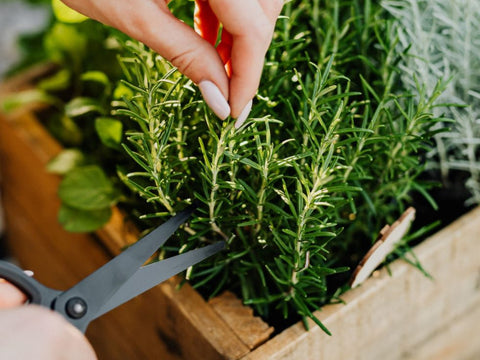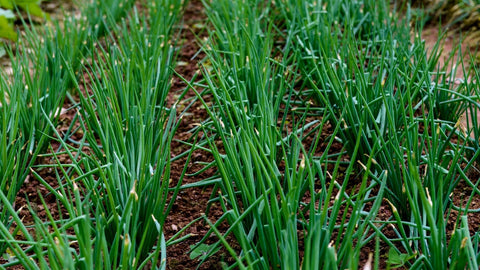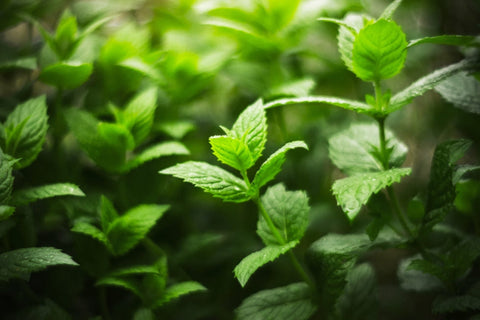Conventional farms typically grow a plant to maturity and then harvest the whole thing – this is done for machine & packaging efficiencies, and it isn’t the best way to harvest your plants. Indoor gardening is quite different. We provide ideal conditions to keep plants alive much longer, so it’s best just to pick what you need, moments before you need it. In this way, harvesting and pruning are one and the same. While the steady supply of fresh herbs is supremely convenient, it also encourages faster growth on tidier plants. Ready to get started?
Types of Pruning

The goal of pruning (aside from the harvests, of course) is to guide your plant to a fuller and more compact shape. It’s also part of getting to know your plants, so you’ll be better able to notice if things are off in the future. It can be a little nerve-racking to take scissors to your plants the first time, so just remember the golden rules: Don’t take more than ⅓ of the plant at a time, always make clean cuts (don’t tear), and pruning is good for plants!
Thinning Cut
A thinning cut is used to make a plant more open. Sometimes the plant will become too dense (especially in the middle and bottom) that light and air have a hard time getting in. A thinning cut is when you trace a stalk down to the base and cut it off entirely.
Heading Cut
A heading cut is used to make a plant bushier. It’s done by cutting the growth tip – the top of a growing stalk. The plant redirects that growth energy to produce side shoots off of that stalk (it works about 4 inches back). These side shoots then produce their own leaves, giving you a fuller and more compact plant.
Two Types of Growth Patterns – and How to Prune Them
Herbs grow in two different ways – they either spiral out from a central base (called radial growth) or they split out of a stalk (called branching growth). With the same goal of keeping things compact and healthy, we prune each of these growth patterns a little differently. Both are super common in the garden and with a little practice pruning will quickly become second nature.
Plants With Radial Growth:
Cilantro, Dill, Scallion, Parsley, Arugula, Kale, Mustard Greens, Lettuce, Beets
Plants With Branching Growth:
Basil, Mint, Lemon Balm, Oregano, Rosemary, Thyme, Sage
How to Prune Plants with Radial Growth

See how all the stems and leaves of these plants grow from a single, central point? This is the defining characteristic of radial growth. The plant puts out new leaves in the center and pushes old leaves outward, getting bigger and bushier over time. With radial plants, it’s best to stick with thinning cuts on the outermost leaves.
You can begin taking small harvests (aka pruning) after the plant is about 4 inches tall and has at least 3 separate stems coming from the base. To harvest, trace the stem back and cut it close to the base (½” above is fine). It’s good to leave at least 2/3rds of the plant left to regrow. Learn more about how to grow herbs indoors.
If you only want a tiny amount of herbs, you also can clip the top off an individual stem – just be sure to leave some leaves on that stem, otherwise it won’t grow back.
How to Harvest Herbs With Branching Growth

Oftentimes, you’ll see two little leaves tucked into the base of a big leaf (so when you cut one, you usually get two in its place).
Branching growth is easy to spot. Where a big leaf meets the stem, you’ll see a set of two tiny leaves (highlighted in the picture above). This is the start of a new shoot and has the potential to grow into a totally new branch of the plant. However, left on their own, plants won’t put too much energy into this side growth, but will rather grow tall and top-heavy (in nature they use their height to compete for light). We get more out of the plants if they grow wide and bushy, so the game is to prune them early and often, mostly with heading cuts. Check out our herb kits for more tips on growing healthy plants.
Once the plant has 3 sets of mature leaves you’re ready for your first heading cut – right on top of the main stalk. Cut off the top set of mature leaves, leaving the bottom two (it’s best to cut right above the pair of leaves you’re keeping on the plant). Once these branch out and each have a few sets of leaves, you can do 4 heading cuts – one at the end of each of these new branches. At this point your plant will be fairly well shaped, so hone your inner Bonzi master and use your thinning and heading cuts to harvest and shape your herbs as you go.
Also – if you want a small amount of herbs, it’s always fine to just pinch off a few leaves from wherever is looking the bushiest.
Hope this helps and if you have any questions, please feel free to leave a comment below.








Thanks, great info